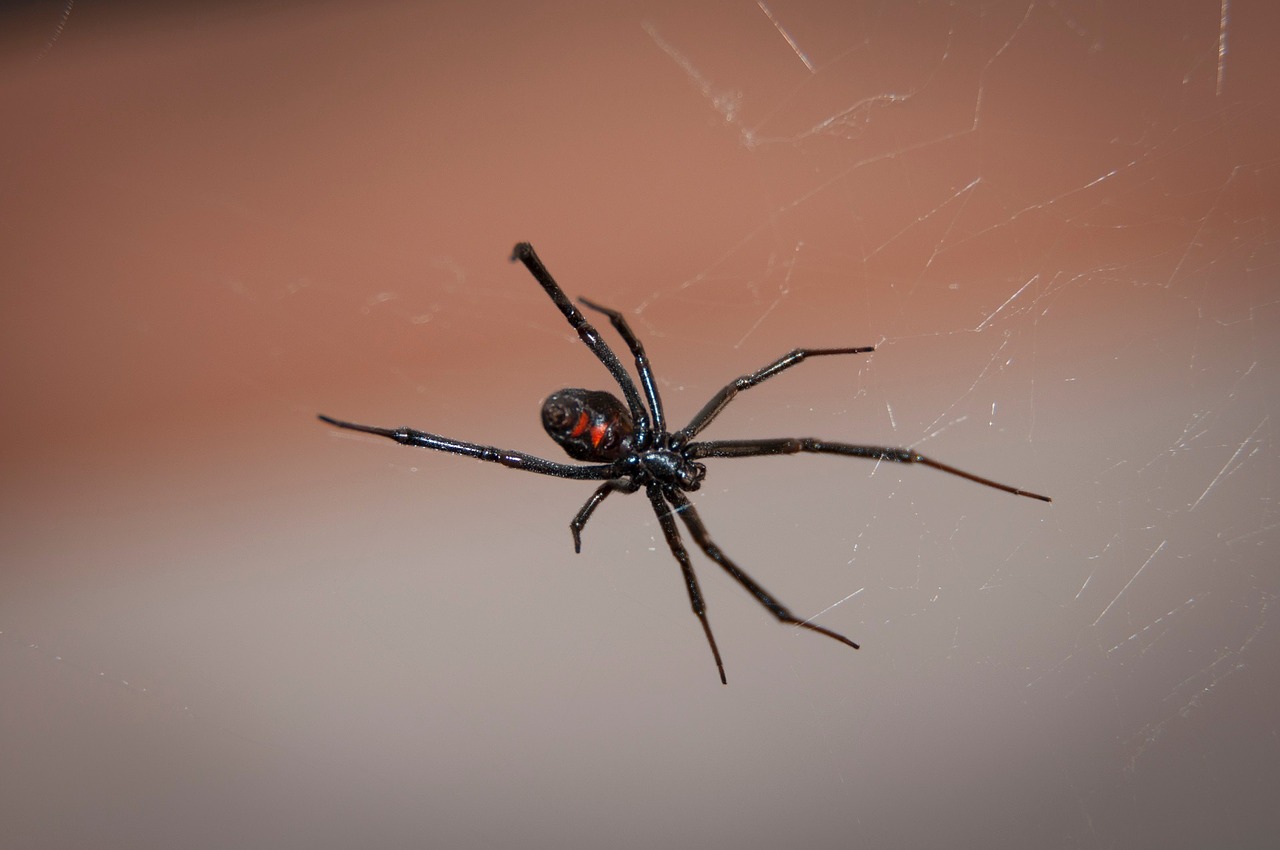One of the ways to tell if you’re dealing with a Black Widow or not is to see if they have a red hourglass marking on the underside of their abdomens. Black Widows are also shiny black and are about 3 to 10 mm in size. Females are larger than males and they can measure 13 mm in body length.
The most common areas to find Black Widow spiders are in dark secluded area such as crevices and woodpiles. In a home Black Widows typically hide in sheltered, dimly lit locations such as garages, dark corners, basements, closets, and cluttered areas. They thrive primarily in temperate zones and are known to be abundant in the American South.
Black Widow spiders are poisonous to humans when bitten, it typically feels like a pen prick, at times you may not realize you have been bitten at first. Then the area around the bite will become red and swollen. Next you will develop more serious symptoms in a few hours. Chest and abdomen will be painful, muscles will cramp, difficulty breathing, nausea, chills, sever increase in blood pressure, sweating, weakness, and fever. These bites are especially dangerous for small children, the elderly, or those with compromised immune systems. If you or a loved one think you have been bitten you need to seek medical attention right away.
An important characteristic of the black widow spider is its comb foot. This row of strong, curved bristles is located upon the hind pair of legs and is used to pitch silk over captured prey. Black widows are shy in nature. They are solitary, socializing only during copulation. Black widows are nocturnal and spin webs during daytime. They can sometimes be seen hanging upside down in their web, exposing a telltale hourglass abdominal marking. This marking is bright red and signals danger to predators and attackers.
On average, male black widow spiders are smaller than females, reaching only about half their size in length. However, the legs of the male black widow are considerably longer in proportion to the females and are marked by orange and brown at the joints. Males may exhibit red and white stripes on the abdomen depending on the species and are more colorful and finely patterned than females.
Like most spiders, the food source of the black widow spider includes a variety of arthropods, including ants, caterpillars, grasshoppers, beetles, cockroaches and scorpions, among others. Black Widows process their food outside of their bodies. After prey is caught in the web, it is injected with digestive enzymes. They consume the prey after it has softened and liquefied. Following feeding, the abdomen of the spider’s body expands as its stomach fills. Like most spiders, the black widow is capable of living for several months without food. Some specimens have been known to survive almost one year in the absence of prey. Black widows are the largest of web-spinning spiders.
If you or your loved one notice black widows in many crevices or secluded areas around you home you need to call a professional. Your friends at All Star Pest Control has trained professionals that can solve your problem. At All Star Pest Control we are trained exterminators who recommend you do not try to solve this issue yourself in case you do end up bitten. Our professional staff understand the precautions that need to be taken when dealing with poisonous spiders. We can help you right away, so don’t stress with the other pest control services. We will make sure the job gets taken care of and the right way the first time around.

